Shada Surface mounting lamps

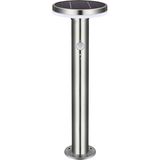
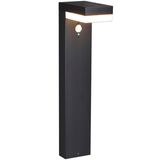
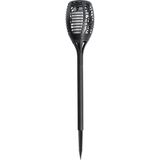
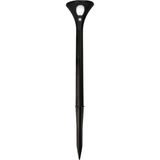
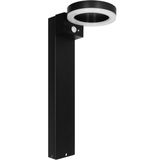

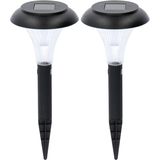

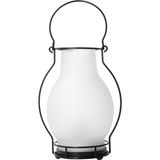


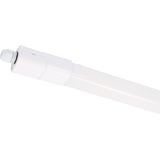
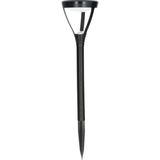



shada surface mounting lamps for quick installs
Compact housings for ceilings and walls where recessing isn’t possible. Heights stay low for corridors and low slabs, with backplates that land on standard junction boxes and conduit grids. Installers get captive screws, deep cable bays, and gasketed lids so IP54/IP65 variants actually seal after first fix. Typical output classes run 1.2–6.0 klm per head, CCT 3000/4000/5000 K, CRI 80 by default with CRI 90 options for front-of-house. Drivers arrive pre-set or selectable (ON/OFF, 1–10 V, DALI-2), and emergency add-ons cover 1–3 h with self-test where specified.
Product range and series overview
Round “puck” bodies handle lobbies and stair cores; square plates suit schools and offices; elongated profiles read well on corridors and façade soffits. Diffusers include opal PMMA for low UGR and micro-prismatic lenses for higher efficacy. Where vandal resistance matters, polycarbonate lids and reinforced clips reach IK08–IK10. Outdoor skus use UV-stabilized housings, stainless fixings, and drain channels to reduce fogging. Accessories: trim rings, spacer frames for uneven plaster, swivel brackets for sloped ceilings, and quick-fit bases that let you wire before hanging the light engine.
shada surface led luminaires optical and electrical design
Efficacy typically 120–160 lm/W depending on lensing and CCT. Power factor ≥0.95 on control-ready drivers, THD ≤10–15 % at nominal load. Surge protection 2–4 kV L-N (up to 6/10 kV on outdoor heads). Thermal design splits the driver bay from the LED board with generous interface area; tc points are accessible for commissioning checks. Lifetime is stated L80 or L90 at 50–100k h with TM-21 projections derived from LM-80 data. Safety per IEC/EN 60598-1/-2-1; photobiological per EN 62471; EMC to EN 55015 and the EN 61000 series. UGR targets in teaching rooms are easiest with prismatic optics and lower luminance engines; specify when ceilings sit below 2.7 m.
Cabling, sealing, and mounting notes
Backplates accept Ø16–Ø25 mm gland entries; compression glands must match jacket OD to preserve IP. Through-wiring is available on many sizes—plan 3×1.5 or 5×1.5 mm² loops with strain relief clearances. On concrete, stand-off kits stop thermal bridging and help avoid condensation rings. For coastal locations, specify coated hardware and silicone gaskets.
Applications and compatibility
Residential corridors and stairwells favor warm/neutral white with opal lenses for soft shadows. Schools and clinics use micro-prismatic optics to hold UGR while lifting maintained lux. Light industrial and parking decks need IP65 bodies, IK10 lids, and 4000–5000 K with sensor inputs. When a spec calls for shada ceiling surface lights in open offices and shada wall mounted lamps in egress routes, keep CCT consistent across planes to avoid color shifts between vertical and horizontal scenes. For consistent branding, match bezel finishes to nearby track or trunking systems.
Controls and sensing
Presence/daylight nodes drop into pre-cut ports or remote via low-voltage leads in partitioned trunking. Standalone profiles (hold-off, delay, setback) work for simple retrofits; networked DALI-2 enables group logic and energy metering. Where camera work is common, request PstLM/SVM limits and document dimmer compatibility on phase-cut retrofits.
shada surface mount spotlights beam options and glare control
Where accents are needed without cutting ceilings, surface canisters with 15/24/36/60° TIR optics provide directional punch. Versions with black cones and deep regress reduce high-angle luminance; tilt/yaw locks stop drift after cleaning. Select narrow beams for merchandise and signage, wider floods for reception islands and artwork clusters.
Selection criteria for B2B clients
Start from target lux and uniformity at the working plane, then choose optic and lumen package. Confirm mounting substrate (plasterboard, slab, metal tray) and fastener type; many failures trace to anchors, not luminaires. Reserve 20–30 % thermal headroom in sealed or hot zones. For healthcare and schools, prioritize low-glare prismatic optics; for transit edges, chase higher IK and surge ratings. If legacy loops must remain, specify drivers tolerant of residual voltage on two-wire sensors. On mixed fleets, standardize two sizes and one bezel finish to simplify spares under shada mounted lighting fixtures.
shada led ceiling mount lamps. integration and ecosystem
Tie luminaires into Shada installation hardware: IP-rated junction boxes with raised bosses for terminal strips, divider trunking when mains and control share routes, and compression glands sized to cable OD. Room kits can include label frames, pigtails, and spacer rings to keep first-fix fast. For exterior soffits and canopies, coordinate with the brand’s street/park heads so photometry and CCT align between façades and adjacent paths.
Technical specifications and standards
Ingress protection typically IP40–IP44 indoors and IP54–IP66 outdoors; impact IK07–IK10. Operating envelope −30…+40/50 °C by model; derate in sealed volumes and under skylights. Color quality: CRI 80 standard, CRI 90 available; SDCM ≤3 keeps phases consistent. Emergency circuits use Li-Fe packs with CC/CV charge, periodic self-test, and remote indicators. Terminations handle 0.5…2.5 mm² copper; torque values are printed near cages to prevent strand damage.
Advantages of working with Bankoflamps
We align pricing to your room lists and pole plans, then show live EU stock before lifts or scaffolds are booked. Quotations usually return in about an hour with EAN/MPN so optics, CCT, driver interface, and emergency options don’t drift between phases. Your portal displays lead times, shipment status, and downloadable price files; pricing validity is held to project gates. Approved accounts can use post-payment up to 30 days. We consolidate partials to cut freight and night work, and your account manager cross-checks mounting substrate, IP/IK class, surge level, through-wiring, sensor ports, and gland threads against your drawings—so cartons land site-ready and crews spend time installing, not re-picking.